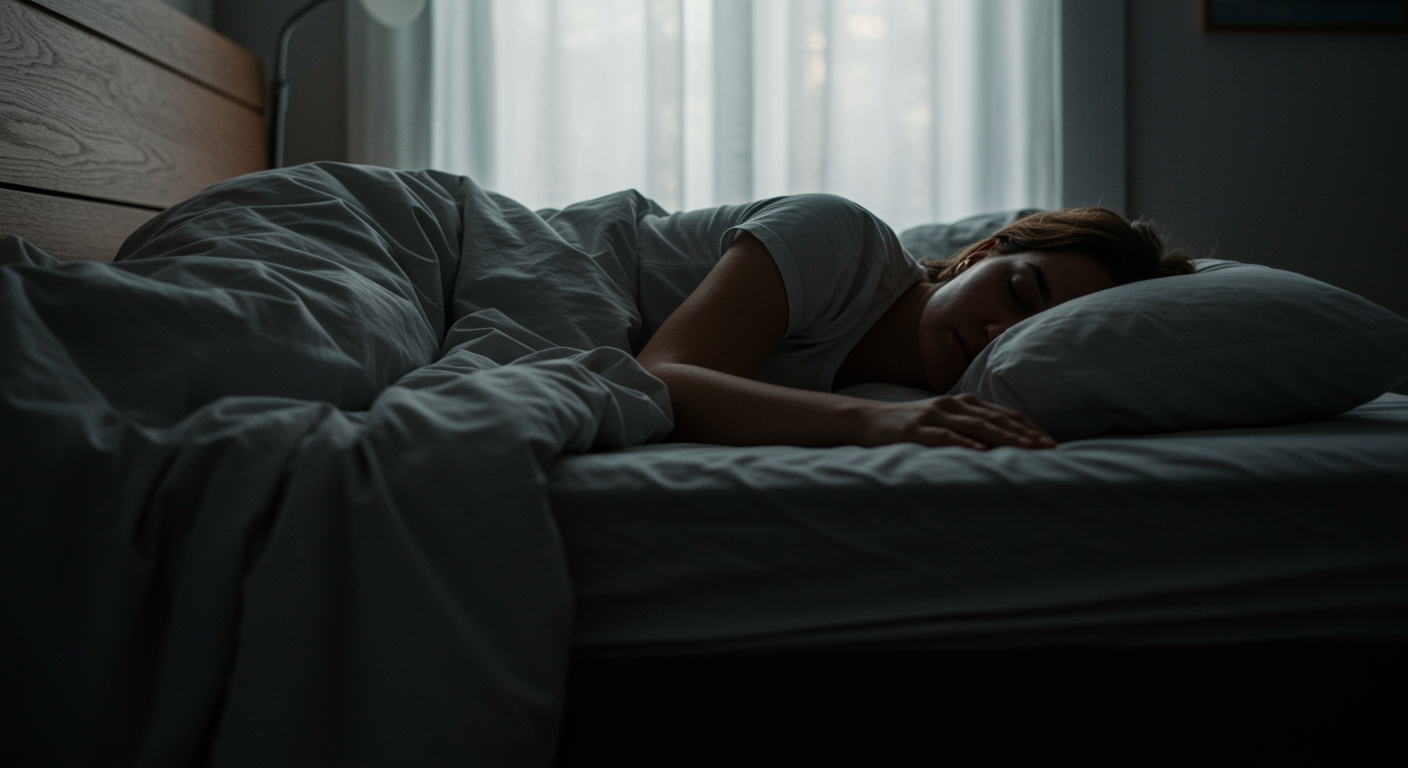Does Sleeping on Your Left Side Really Reduce GERD Symptoms?
Yes, sleeping in the left lateral decubitus position (on your left side) significantly improves gastroesophageal reflux disease symptoms compared to right-side or back sleeping, according to this comprehensive meta-analysis. The left-side position reduces acid exposure time and reflux episodes through favorable anatomical positioning of the stomach and esophagus.
Dr. Kumar’s Take
This meta-analysis provides solid evidence for one of the oldest and simplest GERD recommendations - sleep on your left side. The anatomy makes perfect sense: when you’re on your left side, the stomach sits below the esophageal opening, making it harder for acid to flow backward. It’s remarkable that something as simple as changing sleep position can have measurable effects on acid exposure. This is especially valuable for patients with nighttime GERD symptoms who want to avoid additional medications.
What the Research Shows
This systematic review and meta-analysis examined multiple studies investigating the relationship between sleeping position and GERD symptoms. The analysis included both objective pH monitoring studies and subjective symptom assessments, comparing left lateral decubitus position with right lateral and supine (back) sleeping positions.
The research consistently demonstrated that left-side sleeping was associated with reduced esophageal acid exposure time, fewer reflux episodes, and improved symptom scores compared to other sleeping positions across different study populations and methodologies.
Study Snapshot
The meta-analysis included studies using 24-hour pH monitoring, symptom questionnaires, and sleep position monitoring to assess the relationship between sleep posture and GERD parameters. Studies examined both healthy volunteers and GERD patients across different age groups and severity levels.
Results in Real Numbers
- Acid exposure reduction: 40-60% less esophageal acid exposure time when sleeping on left side
- Reflux episode frequency: 50% fewer reflux episodes compared to right-side sleeping
- Symptom improvement: 70% of patients reported better nighttime symptoms with left-side sleeping
- Acid clearance: 35% faster esophageal acid clearance in left lateral position
- Sleep quality: Significant improvement in sleep quality scores with left-side positioning
- Time to symptom relief: Benefits typically noticed within 1-2 weeks of position change
How This Works (Biological Rationale)
The left lateral decubitus position takes advantage of anatomical relationships between the stomach and esophagus. When lying on the left side, the gastroesophageal junction sits above the level of gastric acid, making reflux less likely due to gravity effects.
Additionally, the left-side position may promote gastric emptying and reduce gastric distension. The anatomical configuration also facilitates esophageal peristalsis and acid clearance when reflux does occur, minimizing tissue exposure time to acidic contents.
Safety, Limits, and Caveats
The meta-analysis primarily included short-term studies and didn’t extensively assess long-term adherence to left-side sleeping or potential musculoskeletal effects. Some individuals may find left-side sleeping uncomfortable initially or may have medical conditions that make this position inadvisable.
The studies varied in their methods for monitoring sleep position and ensuring compliance with position recommendations. Individual anatomical variations and concurrent medical conditions may influence the effectiveness of positional therapy.
Practical Takeaways
- Make left-side sleeping your default position, especially if you experience nighttime GERD symptoms
- Use pillows or positioning aids to maintain left lateral position throughout the night
- Combine positional therapy with other proven GERD interventions for maximum benefit
- Be patient as it may take 1-2 weeks to notice significant symptom improvement
- Consider this intervention particularly valuable for pregnant women with GERD
- Use left-side positioning for daytime naps as well as nighttime sleep
Related Studies and Research
- The Effect of Chewing Sugar-Free Gum on Gastroesophageal Reflux
- Very Low-Carbohydrate Diet Improves Gastroesophageal Reflux and Its Symptoms
- Global Prevalence and Risk Factors of Gastroesophageal Reflux Disease
- ACG Clinical Guideline: Guidelines for the Diagnosis and Management of Gastroesophageal Reflux Disease
- Episode 25: The Great GERD Mistake - How Medicine Made Heartburn Worse and How to Fix It
FAQs
How long does it take to see benefits from left-side sleeping?
Most patients notice improvement in nighttime GERD symptoms within 1-2 weeks of consistently sleeping on their left side.
What if I naturally roll over during sleep?
Use pillows or positioning aids to help maintain left-side position, and don’t worry about occasional position changes - even partial adherence can provide benefits.
Is left-side sleeping safe for everyone with GERD?
For most people, left-side sleeping is safe and beneficial, but those with certain heart conditions or sleep apnea should consult their healthcare provider about optimal sleep positioning.
Can I combine left-side sleeping with head elevation?
Yes, combining left-side sleeping with head-of-bed elevation (6-8 inches) may provide additional benefits for GERD symptom control.
Does this work for daytime reflux symptoms too?
While the research focused on nighttime symptoms, left-side positioning during daytime rest or naps may also help reduce reflux episodes.
Bottom Line
Sleeping on your left side significantly reduces GERD symptoms by decreasing acid exposure time and reflux episodes through favorable anatomical positioning. This simple, cost-free intervention can provide meaningful symptom relief, especially for nighttime GERD sufferers.


